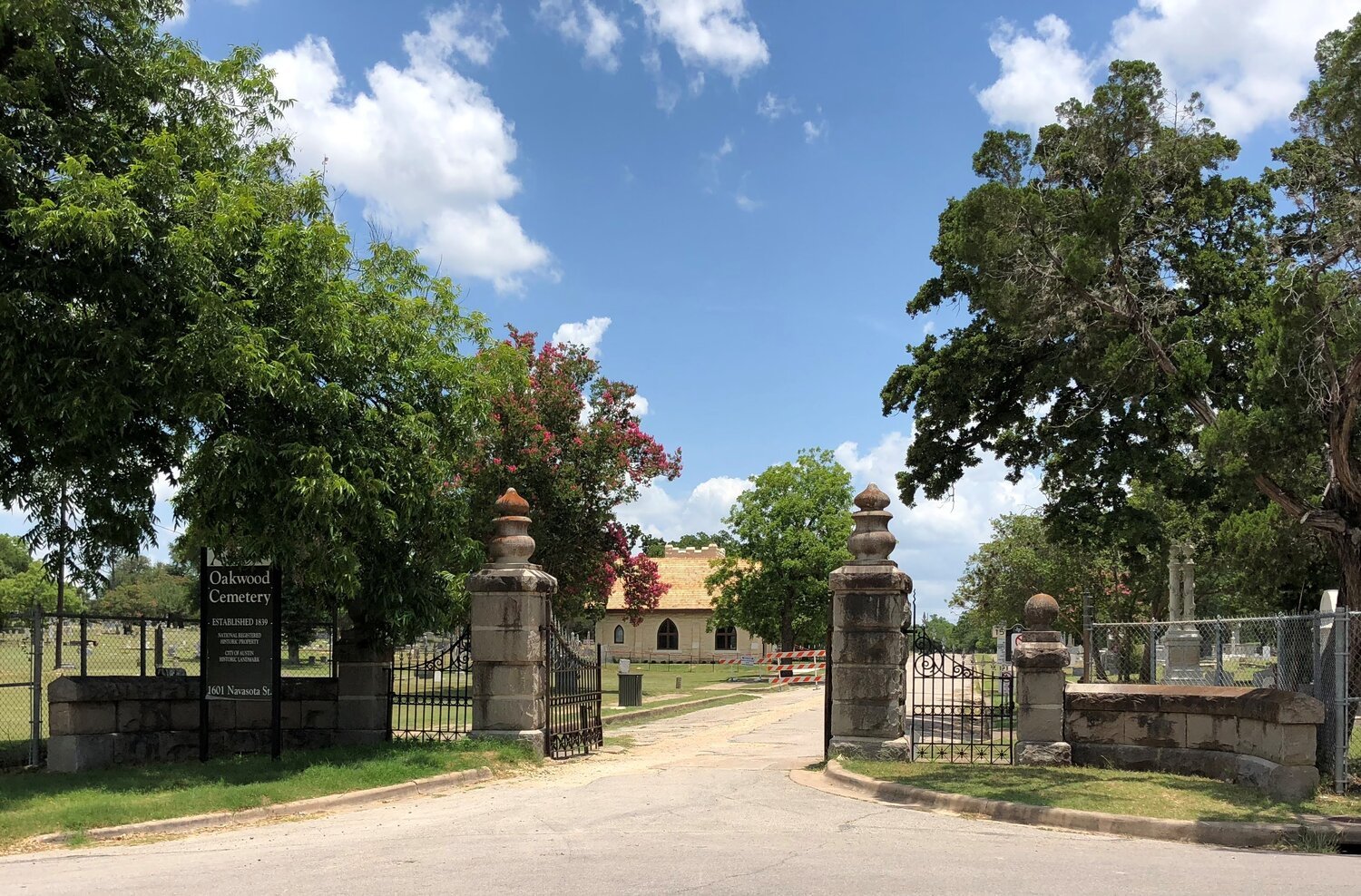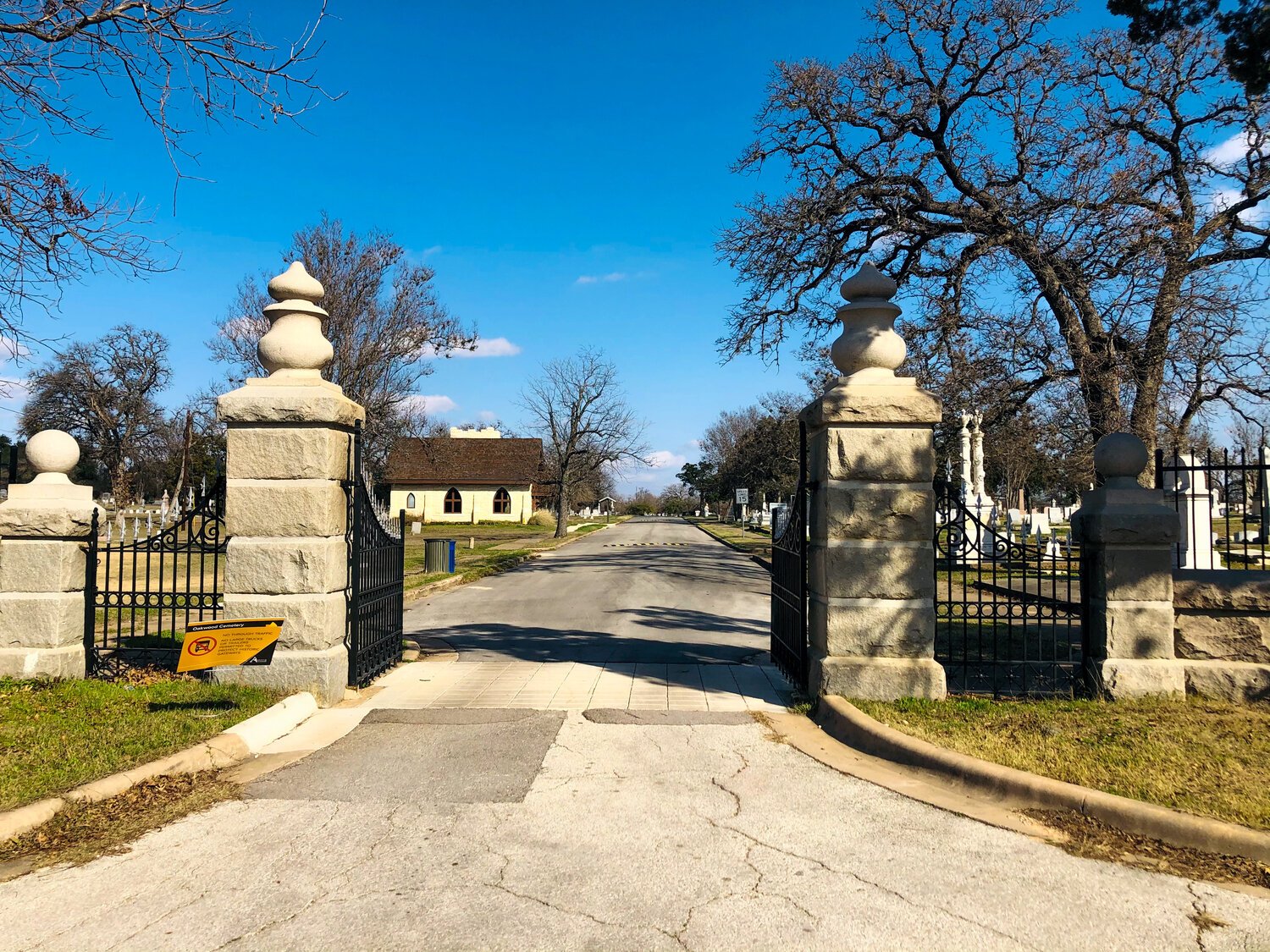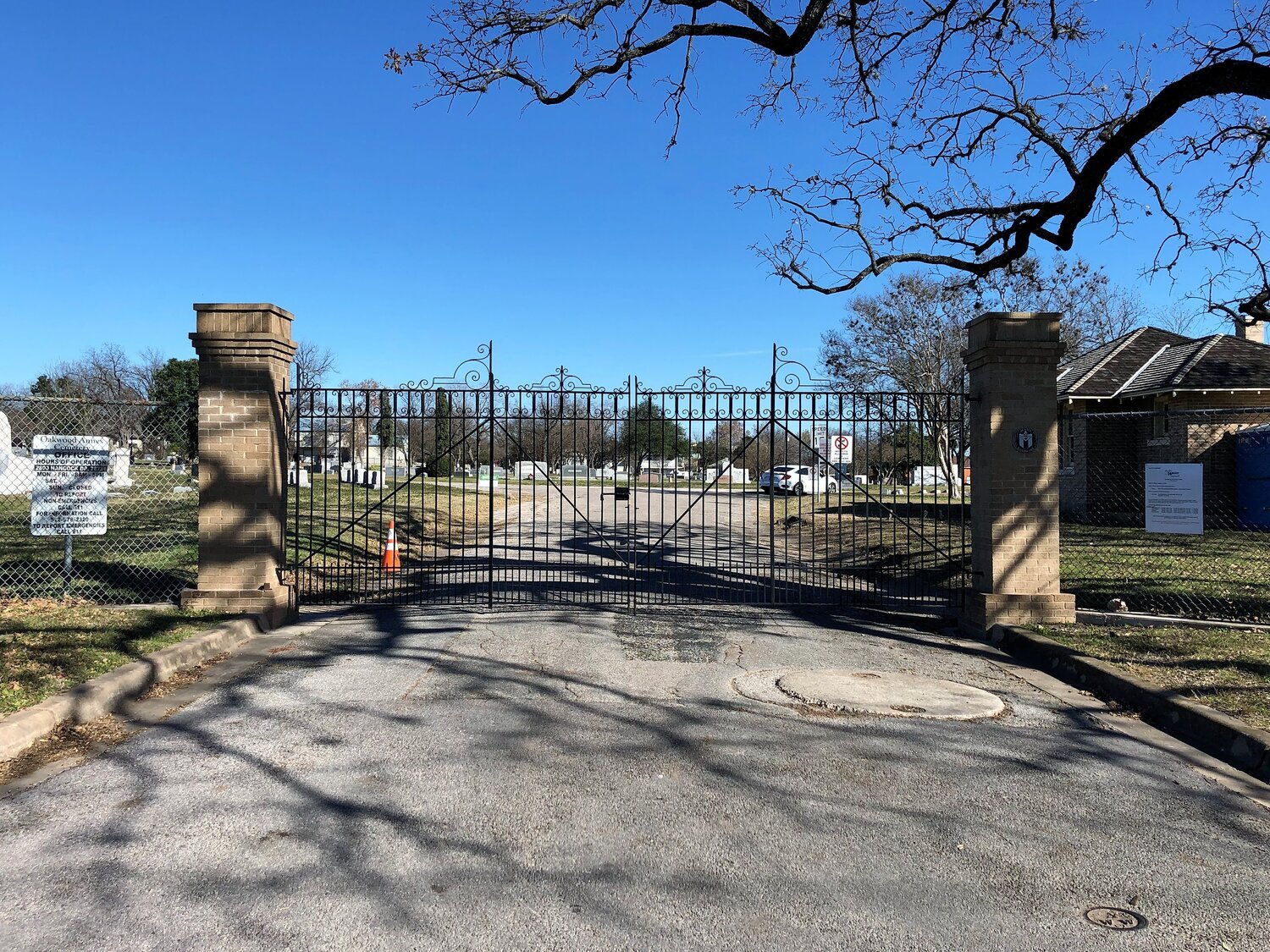PARD Restoration of Oakwood Cemetery Gates
BY SARAH MARSHALL
The City of Austin Parks and Recreation Department (PARD) manages more than 300 parks, greenbelts, trails, and nature preserves, but many do not realize that this number also includes five municipal cemeteries: Oakwood Cemetery, Oakwood Cemetery Annex, Evergreen Cemetery, Austin Memorial Park Cemetery, and Plummers Cemetery. In the spring of 2013, PARD took over cemetery management from InterCare Corporation, Inc., which had been providing grounds maintenance, tree maintenance, and burial operations on behalf of the city since 1990. Following a lengthy review by the community and key city boards and commissions, the Historic Cemeteries Master Plan was approved by the Austin City Council in September 2015. The award-winning Master Plan was the first in the city to provide a long-term framework for the cemeteries’ rehabilitation, management, and activation.
Oakwood Cemetery gates prior to restoration.
Part of the Master Plan’s proposal for Oakwood Cemetery and Oakwood Cemetery Annex was transforming them into revered historic sites. Following the Preservation Merit Award-winning restoration of the Oakwood Chapel in September 2018, PARD started restoration of the gates and the replacement of deteriorated fencing at both cemeteries to elevate their importance and history for visitors.
Oakwood Cemetery Chapel
Oakwood Cemetery was originally established in 1839 as the “City Cemetery” at the northeast corner of the original town plat. In 1856, the Texas legislature granted the property to the City of Austin, and the City officially changed the cemetery’s name to “Oakwood” in 1908. The earliest grave marker shown in historical records was 1840, although there is speculation that the earliest burial was that of an enslaved person in 1839. The cemetery now has more than 23,000 burials. Lots were sold out by the early twentieth century, but Oakwood Cemetery continues to receive burials annually.
New steel fence to replace chain link and barbed wire.
By the early 1900s, the City began to run out of lots for sale at Oakwood Cemetery. In response, citizens—including the ladies’ Oakwood Cemetery Association—called on the City to enlarge the cemetery by purchasing additional land nearby. The Oakwood Cemetery Association president wrote to Mayor J. T. Wooldridge and recommended that the City purchase land just east of Oakwood Cemetery, expressing a concern that the older cemetery would be abandoned if a new one opened in a different part of town. In May 1912, the City issued bonds worth $50,000 to purchase the land for cemetery purposes. Oakwood Cemetery Annex was established as a municipal cemetery in 1915.
The main gate at Oakwood Cemetery is located on its west side along Navasota Street. This gate was constructed in 1908 after the Oakwood Cemetery Association raised funds for the erection of an attractive and dignified gate. It is composed of four rusticated granite columns, a double wrought iron gate for vehicles, two flanking wrought iron pedestrian gates, and flanking curved wing walls of rusticated granite masonry. Each of the four granite columns is topped by a decorative finial. The wrought iron gates were manufactured by The Stewart Ironworks Company out of Cincinnati, Ohio. John Andrewartha was the architect, and he also designed the Louisville, Kentucky City Hall and the Hirshfeld House in Austin. He is buried in section one at Oakwood Cemetery.
Lars Stanley, FAIA, LEED AP, inspects the west/main gate of Oakwood Cemetery at his studio.
Vehicular traffic had damaged and displaced the original stone at Oakwood Cemetery’s main gate throughout the years. PARD’s 2018 restoration included dismantling and cataloguing its components, then restacking them carefully. The wrought iron at this entrance had also suffered damage from automobile impacts, so was restored as well.
The entrance to Oakwood Annex almost mirrors the east entrance of Oakwood Cemetery just across Comal Street. Both are composed of two matching yellow brick columns supporting a double-leaf iron vehicular gate of bent steel. The Annex gate was built in 1916, but slight differences in design make it appear that the Oakwood Cemetery east gate was built earlier than the Annex Cemetery main gate. Both were modified in 1980 to make vehicular access easier for larger cars by splicing in the pedestrian sections to widen the entrance. During the 2018 restoration, both gates were cleaned, repaired, and restored.
Oakwood Cemetery, 2019
All wrought iron was refurbished by Stanley Studio Architects. The practice is experienced in projects that integrate artistry, community, and craftsmanship, and previously worked on the restoration of the gate at the Elisabet Ney Museum for PARD in 2017. After producing spectacular results at the Ney displaying their attention to detail and metalwork knowledge, Stanley Studio was a great option for the restoration of gates at Oakwood and the Annex. Their scope of work included straightening damaged wrought iron, reassembling and welding missing pieces, cleaning, sandblasting, repair of latches, and new paint.
The gate project is being done in tandem with fencing replacement at both Oakwood Cemetery and Oakwood Annex Cemetery. The previous chain link fence set along the property line was topped with a double row of barbed wire in most places causing an unseemly appearance that was unsuitable for these historic sites. Some old photographs of the cemetery show a spear-point picket fence. PARD wanted the new fence to relate to the historic one, to communicate a feeling of importance to the public, and to provide better security. Black, spear-point metal steel picket fencing was chosen for both cemeteries. The new fence is meant to convey the significance of these historic sites with a nod to one of the iterations of the earlier historic fence.
Oakwood Cemetery, 2019
Both the gate restoration and fencing project are being funded by the City Council-allocated Hotel Occupancy Tax (HOT) funding dedicated to historic preservation projects. The Cemeteries Master Plan called for designing Oakwood Cemetery and the Annex as historic sites and encouraging visitors to explore Austin’s history through the stories of the cemeteries’ residents. The new, elegant fence and restored gates are just one more step in making the Master Plan’s vision a reality by welcoming visitors to these significant public spaces.
Oakwood Cemetery Annex’s Main Gate (1916) after restoration.
THIS ARTICLE WAS WRITTEN FOR PRESERVATION AUSTIN’S SUMMER 2019 NEWSLETTER. READ OUR COMPLETE NEWSLETTER ARCHIVE HERE.







